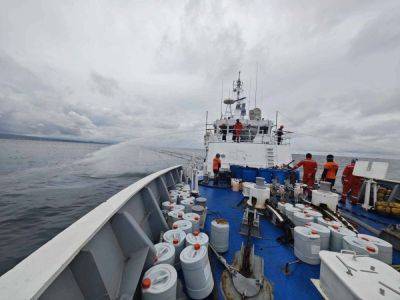PCG: Oil siphoning from sunken tankers won’t contaminate bay
MANILA, Philippines — Despite the planned siphoning of oil and diesel from two sunken motor tankers, the Philippine Coast Guard (PCG) gave assurance that these activities would not further contaminate the waters of Manila Bay.
“We are appealing to the public to be patient. But we are assuring them that we are doing everything we can so that the siphoning activity would not alter the present status. At present, the Manila Bay is clean. We would want to keep it that way even if we start with the siphoning. Safety will still be our primary concern,” PCG commandant Admiral Ronnie Gil Gavan said yesterday.
Siphoning operations will start soon, he noted.
Motor tankers Terra Nova and Jason Bradley sank off the waters of Bataan last month.
“There is still no oil spill and we have controlled the oil sheen (of Terra Nova). Yesterday, they conducted the simulation (of the siphoning) and it was satisfactory. We expect them to start (siphoning) anytime soon, they are just completing the tests,” Gavan said.
But he admitted that they should exercise caution with the siphoning process.
For the 65-meter Terra Nova, they would only siphon part of the 1.4 million liters of industrial fuel cargo, which would be enough for the ship to be refloated “in a very controlled way.”
Terra Nova – submerged 34 meters deep and 3.6 nautical miles off Lamao Point in Limay, Bataan – would require the sealing of 24 valves with metal caps, PCG Bataan station commander Lieutenant Commander Michael John Encina earlier said.
He noted that they would pump seawater into Terra Nova and pump out the oil.
“This is the safest way to do the siphoning,” he said.
“The vessel was not built to float underwater. It was made to float above water. It is not like the structure of a submarine. We are afraid that the vessel might snap in two,” he added, referring to a previous plan of refloating the vessel first before siphoning 50,000 to 60,000 liters of industrial fuel daily while on the shore.
Installation of metal caps to seal the tanker’s valves has started, Encina said.
Workers affected by the oil spill in Bataan will receive assistance through the emergency employment program of the Department of Labor and







